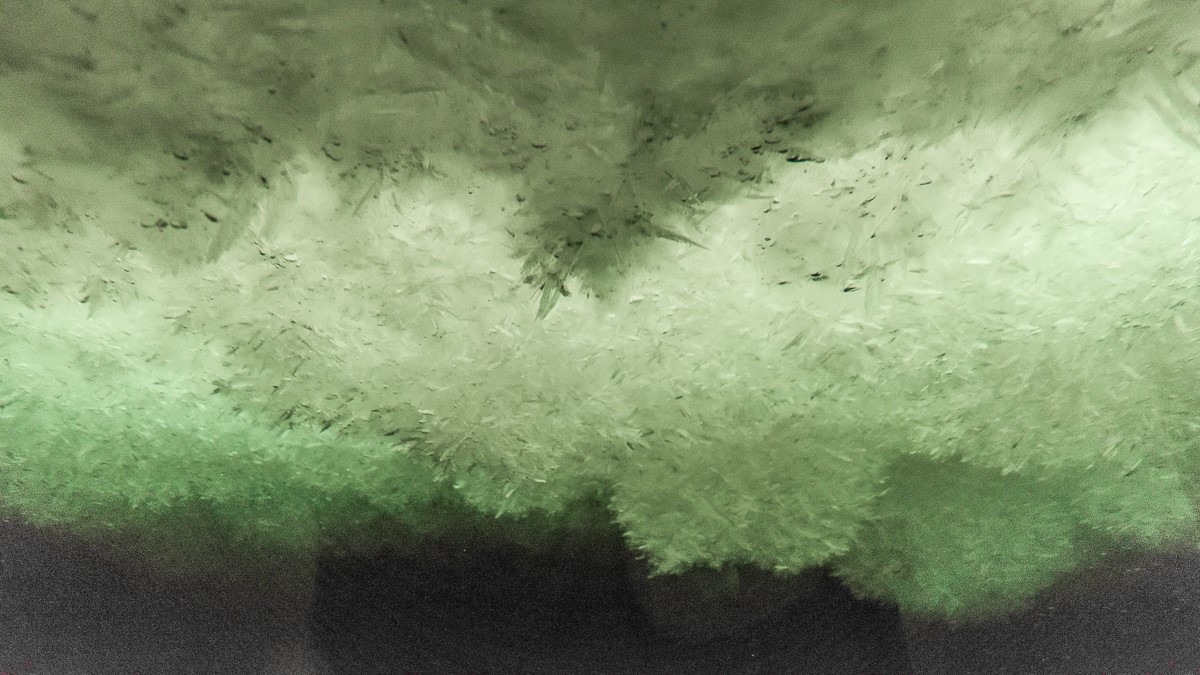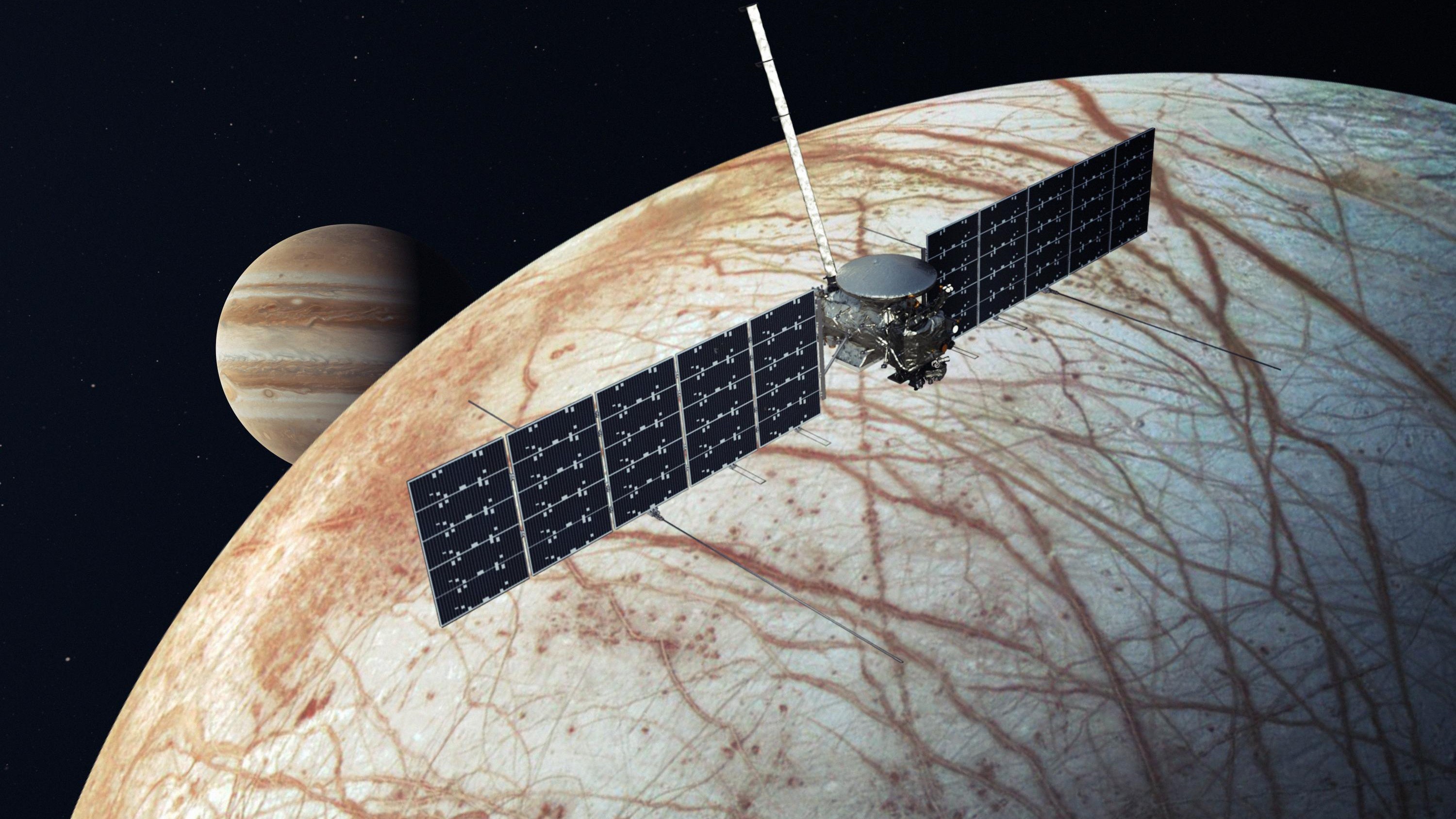Europa's icy shell may be made from pure underwater snow
The shell of Jupiter's ice moon may form from upside-down snowstorms.

The shell of Jupiter's famous ice moon may be formed, in part, by pure underwater snow that floats up instead of falling down.
A new study, published in the August issue of the journal Astrobiology, finds that Europa's icy crust might be built partially by "frazil ice," a fluffy accumulation of ice crystals that also builds up beneath ice sheets on Earth. This frazil ice holds a fraction of the salt found in ice that grows from the ice shelf itself, suggesting that Europa's ice sheets may be less salty than previously believed.
“When we're exploring Europa, we’re interested in the salinity and composition of the ocean, because that's one of the things that will govern its potential habitability or even the type of life that might live there," study lead author Natalie Wolfenbarger, a graduate student researcher at the University of Texas Institute for Geophysics, said in a statement.
Related: What are the different types of ice formations found on Earth?
For astrobiologists, Europa is one of the most intriguing objects in the solar system. The moon is covered by an ocean 40 to 100 miles (60 to 150 kilometers) deep, capped off by an ice crust 10 to 15 miles (15 to 25 km) thick, according to NASA. Europa is a quarter of the size of Earth, but its surface-wide ocean may hold about twice the water as all of Earth's oceans, according to the space agency, making the moon an intriguing place to search for extraterrestrial life.

A new NASA orbiter, Europa Clipper, is set to launch in October 2024 to fly by the ice moon to see if it might be a suitable habitat for life. University of Texas at Austin scientists are leading the development of Europa Clipper's ice-penetrating radar instrument, which will peer into the ice sheet and the ocean just beneath it.
As part of that effort, the researchers wanted to understand how the ice sheet might be structured. They turned to Earth as an analogue, examining the two main ways ice forms under Antarctica's ice sheets. One form, congelation ice, grows from the ice shelf surface. The other, frazil ice, forms in cold seawater and drifts upward as flakes like a reverse snow, ultimately becoming trapped under the ice sheet.
Get the world’s most fascinating discoveries delivered straight to your inbox.
Europa, like Antarctica, likely has a low temperature gradient, meaning the temperature changes little with depth. In these conditions, Wolfenbarger found, frazil ice is quite common, particularly in spots where the ice thins in rifts or fractures. If frazil ice is also common on Europa, it could make a big difference in the composition of the moon's ice shell. Whereas congelation ice might contain 10% of the salt of the surrounding seawater, frazil ice is far more pure, containing only 0.1% of the salt in the seawater it forms from. Not only could this low-salt ice affect the structure and strength of Europa's ice crust, it could also impact how well the Clipper's radar can penetrate the ice.
"This paper is opening up a whole new batch of possibilities for thinking about ocean worlds and how they work," Steve Vance, a research scientist at NASA’s Jet Propulsion Laboratory (JPL) who was not involved in the study, said in the statement. "It sets the stage for how we might prepare for Europa Clipper’s analysis of the ice."
Originally published on Live Science.

Stephanie Pappas is a contributing writer for Live Science, covering topics ranging from geoscience to archaeology to the human brain and behavior. She was previously a senior writer for Live Science but is now a freelancer based in Denver, Colorado, and regularly contributes to Scientific American and The Monitor, the monthly magazine of the American Psychological Association. Stephanie received a bachelor's degree in psychology from the University of South Carolina and a graduate certificate in science communication from the University of California, Santa Cruz.


